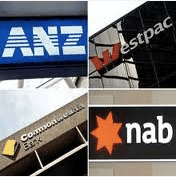
Cross-posted from The Conversation
In October 2008, at the height of the Global Financial Crisis (GFC), the federal government decided to guarantee bank deposits. The ‘financial claims scheme‘ (FCS), was an emergency measure to protect the banking system.
Initially, deposits up to $1m at ‘authorised deposit-taking institutions’ (ADIs) were insured by the government at no charge. From February 1, 2012, the cap was dropped to $250,000 per person per institution. The government also had a scheme to guarantee large deposits that finished on 31 March 2010.
Government deposit insurance is new in Australia. Traditionally, bank deposits were not insured. If a bank went belly-up, depositors joined the queue along with other unsecured creditors. Their protection was that they jumped to the front of the queue.
But the GFC showed that bank deposits were, for all practical purposes, insured. Politically, the federal government could not allow depositors to face the risk of bank bankruptcy. They had to intervene. Hence, Australian deposit insurance was born.
This was not a surprise. Experience had shown that governments could not stand aside and let the market work when voters had money at risk. As the Reserve Bank of Australia (RBA) noted, if a bank failed:
“[T]he Government would be under pressure to make an ad hoc response, as was demonstrated by the failure of the general insurer HIH in 2001”.
The government had announced the introduction of a form of deposit insurance in 2008 but the GFC beat them to it. And we had an ad hoc policy response.
The current FCS covers about 99 per cent of deposit accounts in full. But it has some features which, at a minimum, need to be debated.
The FCS provides insurance to banks but does not charge them an insurance premium. If a bank fails the government pays out insured deposits and recovers the money, first from the failed bank and then through a levy on other banks.
This is odd.
It means that banks receive a benefit that they do not pay for. Deposit insurance benefits the banks. It makes it easier for a bank to raise funds and compete with other financial institutions that are not insured by the government.
Deposit insurance also has a ‘dark side’. It encourages banks to take risks. So the FCS must be accompanied by strong regulatory intervention through the Australian Prudential Regulation Authority (APRA). Australia has strong regulation but even the best regulation can be gamed.
An alternative is to charge the banks for their insurance. That charge could depend on the risk of bankruptcy. The more risky the bank, the higher the charge. Indeed, that is exactly what the government did with the guarantee on large deposits during the GFC.
While a risk-rated premium improves banks’ incentives, it doesn’t improve depositors’ incentives.
Martin Byford and Sinclair Davidson from RMIT have looked at this problem and come up with a novel solution. APRA could explicitly rate the banks. The payout that depositors receive under the FCS if their bank defaults would be directly related to that rating. If your deposits are in a riskier institution, then you get less protection than if they are in a safer institution. Indeed Byford and Davidson suggest a simple linear scheme.
“[A] depositor with $10,000 deposited in a ‘93’ rated bank [out of 100] would be guaranteed to receive $9,300 in the event of a bank failure”.
The scheme creates an explicit measurement of bank risk and gives incentives to both depositors and financial institutions. If you are a risk averse depositor you may only look at a high-rated bank. But such a bank will pay a low interest rate. Other depositors may be willing to take more risk, but lower-rated institutions will have to pay depositors a higher interest rate to attract their funds.
So the Byford and Davidson scheme combines flexibility with strong incentives.
To work, however, the government would need to be able to let depositor/voters lose some of their money if they put funds in a risky institution that goes bankrupt. This may be easy for small ADIs but harder for a ‘too big to fail’ major bank.
While the Byford and Davidson scheme may not have all the answers, we at least need a debate on the issues.
Currently the banks receive ‘free’ insurance that is not tied to their underlying risk. At a minimum, creating better incentives through an up-front risk-based premium with more depositor information and incentives would be a useful adjunct to APRA’s regulation.
The RBA’s argument against upfront premiums is that they are unlikely to accrue to the point where the funds match the liabilities if a bank fails. This is true but irrelevant.
The point of a risk-based deposit insurance premium is to provide good incentives to banks and depositors.
The current insurance scheme cross subsidises risky banks. If a bank takes increased risks with their funds then they pay no more for insurance despite the increased risk. In contrast, when the insurance premium increases with risk, banks face an explicit cost when they take risky actions.
The current FCS also removes any incentive for depositors to monitor their bank’s level of risk. It is a one size fits all scheme. Even if a depositor was happy to take more risk (with a higher rate of return), the depositor couldn’t do so. So the current deposit insurance arrangements encourage banks to take increased risk and take away the incentive for depositors to find out about that risk. It places all the responsibility for the security of the financial system back on APRA and makes APRA’s job harder. To me, that doesn’t sound like the way to design a deposit insurance scheme.
Article by Stephen King, Professor of Economics at Monash University

